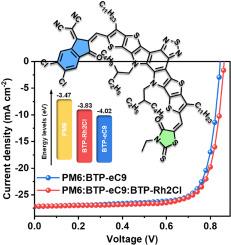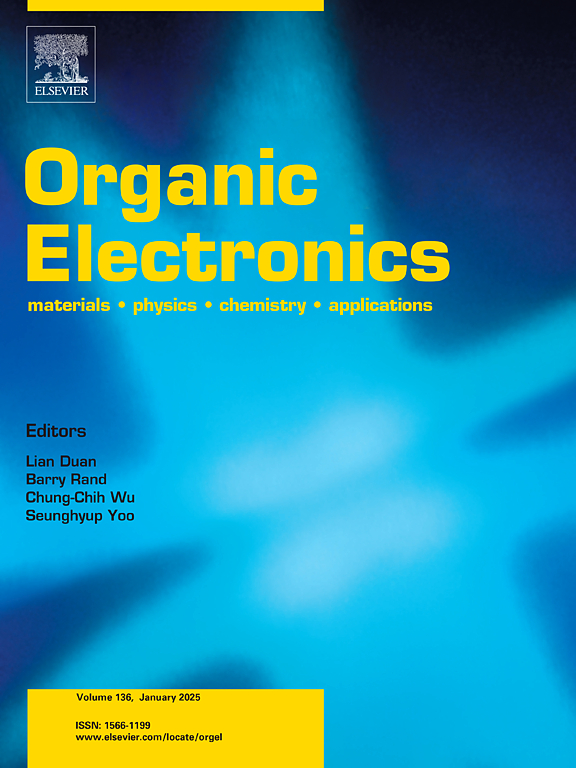Leveraging rhodamine-terminated small molecule acceptors for high open-circuit voltage and improved efficiency in organic solar cells
IF 2.6
4区 工程技术
Q3 MATERIALS SCIENCE, MULTIDISCIPLINARY
引用次数: 0
Abstract
The asymmetric molecular design strategy has been proven to be an effective method to improve the photovoltaic performance of organic solar cells. In this work, to extend the pool of asymmetric non-fullerene acceptors, we introduced rhodamine as a terminal group into Y-series small molecule acceptors (SMAs) and synthesized three asymmetric SMAs (BTP-Rh2F, BTP-Rh2Cl, and BTP-Rh2Br) with different halogen substitutions. As a result, shallow lowest unoccupied molecular orbital energy levels of these SMAs contribute to high open-circuit voltage (VOC) values exceeding 0.95 V in corresponding devices. However, insufficient exciton dissociation and inefficient charge carrier mobility limit the power conversion efficiencies (PCEs). Notably, the introduction of BTP-Rh2Cl as a third component into the PM6:BTP-eC9 binary host system effectively reduces non-radiative recombination, ultimately yielding an enhanced PCE of 18.03 % along with improved VOC of 0.863 V. This work highlights the potential of rhodamine-modified SMAs in enhanced VOC and high-efficiency ternary solar cells.

利用罗丹明端接小分子受体的高开路电压和提高效率的有机太阳能电池
不对称分子设计策略已被证明是提高有机太阳能电池光电性能的有效方法。为了扩大不对称非富勒烯受体的范围,我们将罗丹明作为末端基团引入到y系列小分子受体(SMAs)中,合成了三种不同卤素取代的不对称SMAs (BTP-Rh2F、BTP-Rh2Cl和BTP-Rh2Br)。因此,这些sma的最低浅未占据分子轨道能级导致相应器件的高开路电压(VOC)值超过0.95 V。然而,激子解离不足和载流子迁移率低限制了功率转换效率(pce)。值得注意的是,在PM6:BTP-eC9二元主机系统中引入BTP-Rh2Cl作为第三组分,有效地减少了非辐射复合,最终提高了18.03%的PCE和0.863 V的VOC。这项工作突出了罗丹明改性sma在增强VOC和高效三元太阳能电池中的潜力。
本文章由计算机程序翻译,如有差异,请以英文原文为准。
求助全文
约1分钟内获得全文
求助全文
来源期刊

Organic Electronics
工程技术-材料科学:综合
CiteScore
6.60
自引率
6.20%
发文量
238
审稿时长
44 days
期刊介绍:
Organic Electronics is a journal whose primary interdisciplinary focus is on materials and phenomena related to organic devices such as light emitting diodes, thin film transistors, photovoltaic cells, sensors, memories, etc.
Papers suitable for publication in this journal cover such topics as photoconductive and electronic properties of organic materials, thin film structures and characterization in the context of organic devices, charge and exciton transport, organic electronic and optoelectronic devices.
 求助内容:
求助内容: 应助结果提醒方式:
应助结果提醒方式:


